We’ve all heard the term “enduro line”… hell, I’ve shouted it myself in jest a few times when I’ve messed up and sent it through the foliage. The “enduro line” is a euphemism that hides a much darker side of the sport: the shortcut or cheat line. Line choice is how we as riders express ourselves, but when those short, high-risk lines or tight turns grow into something more sinister, like cutting out huge sections of track, it’s time to start asking ourselves with whom does responsibility lie?
Before we get into this any further, please watch this video.
So what do you think? What was the first thought that popped into your head? Was it ‘cheat,’ ‘racing line,’ ‘playing by the rules,’ or simply ‘the enduro line’? This initially entertaining (but also quite disturbing) video was captured by a racer at a recent UK enduro race, and it caused a small but potent social media outcry. In the end, a small number of experienced racers took it on themselves to complain to the organisers that the stage taping was compromised, and ultimately the stage was cancelled. However, the fact that many racers were actively practicing this line and intending to take it shows the level of disregard for the trail that now creeps through even grassroots racing. The footage stands as a very clear challenge to the role of the organiser and the racer when it comes to ensuring fair play.
Of course, technically the racer in the video above is playing by the rules; the stage is terribly taped and no rules have been broken, but it is crystal clear that this is not the line the organiser intended. Does it matter if the riders cut corners like this? Well, yes! Think of the riders who built the trail… do you think they would like to see their corners cut and damaged like this? Would you want to see hundreds of riders doing this on your own trails? Of course not! Not to mention the safety implications of straying so far from the intended trail, into an area where there may be hazards that the organisers, responsible for your safety, have not foreseen.
Of course, there has to be a level of expression in enduro; nobody wants to race a confined scalextric track, and skilled riders should be encouraged to take more technical lines in order to save time. However, setting out in practice with the aim of probing the course boundaries to exploit any inexperienced taping mistakes is hardly in the spirit of enduro, and let us not forget that it’s these “enduro lines” that damage the reputation of the sport.
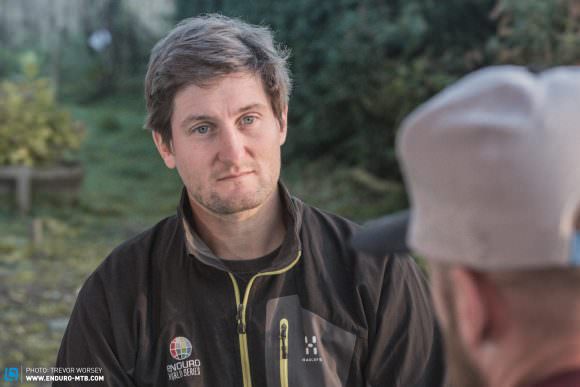
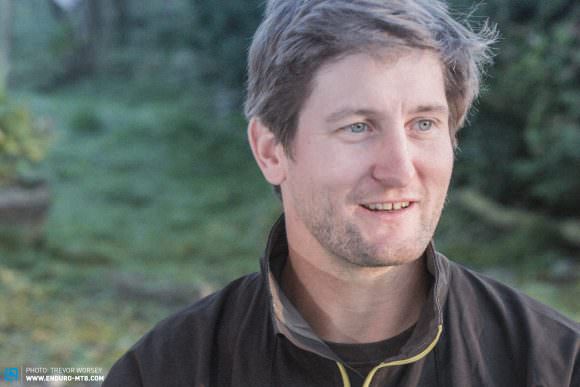
When a mistake in the taping is discovered there are two parties involved: the racer and the organiser. To get the organiser’s perspective, we sat down with EWS Director Chris Ball to hear his opinion on the “enduro line” conundrum, something he faces at the highest level. “The ‘enduro line’ is probably the single biggest topic that gives enduro a bad name. The sport was built on a spirit of fairness and the joy of riding your bike, a spirit that is unfortunately lost when these situations arise. It only takes one rider to start the process, and then other riders are forced to follow.” That’s certainly the situation I’ve personally seen at many races, from international to local grass roots racing; the grey area surrounding the situation breeds an “If they’re doing it, so must I” mentality. Chris continues, “There are often two sides to it. First, there’s a massive onus on the organiser to provide a fair playing field on which people can race, as there may be a title, money, points, or even careers at stake. The organiser needs to look after the playing field, but also has a responsibility to look after the trail itself… sometimes many months of negotiating fragile relationships between land owners and riders will have been carefully worked over.
It’s easy to lay all the responsibility with the organisers, but there’s an equal responsibility on the rider to understand that enduro isn’t downhill, or world cup XC where the entirety of the course can be taped. We had it in Argentina: there was a huge line that wasn’t taped, it was just so big that none of the organisers had noticed it. We try and encourage a culture in the EWS that riders can come to us and let us know if there are any lines that could be compromised. If we find them we tape them out, and then the riders no longer have to worry if they should take the line or not.”
So is it down to the riders to ensure that the taping is correct? Chris continues, “The rider’s role is important yes, we trust in responsible behaviour from the riders, developing a culture that the sport needs. It’s easy for riders to blame organisers, but in the end they are shooting themselves in the foot as they’re only damaging the trails that they like to ride… who wants to ride a straight line? They also give themselves a bad name with other riders, teams, and potential sponsors.”
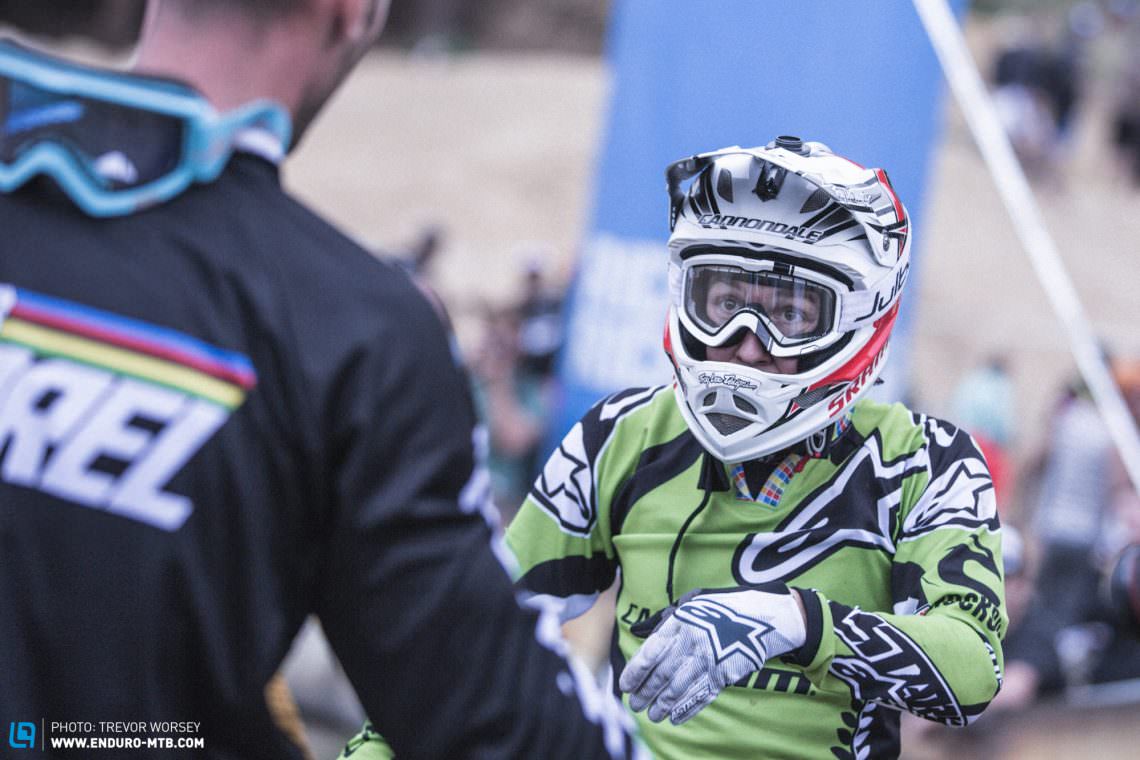
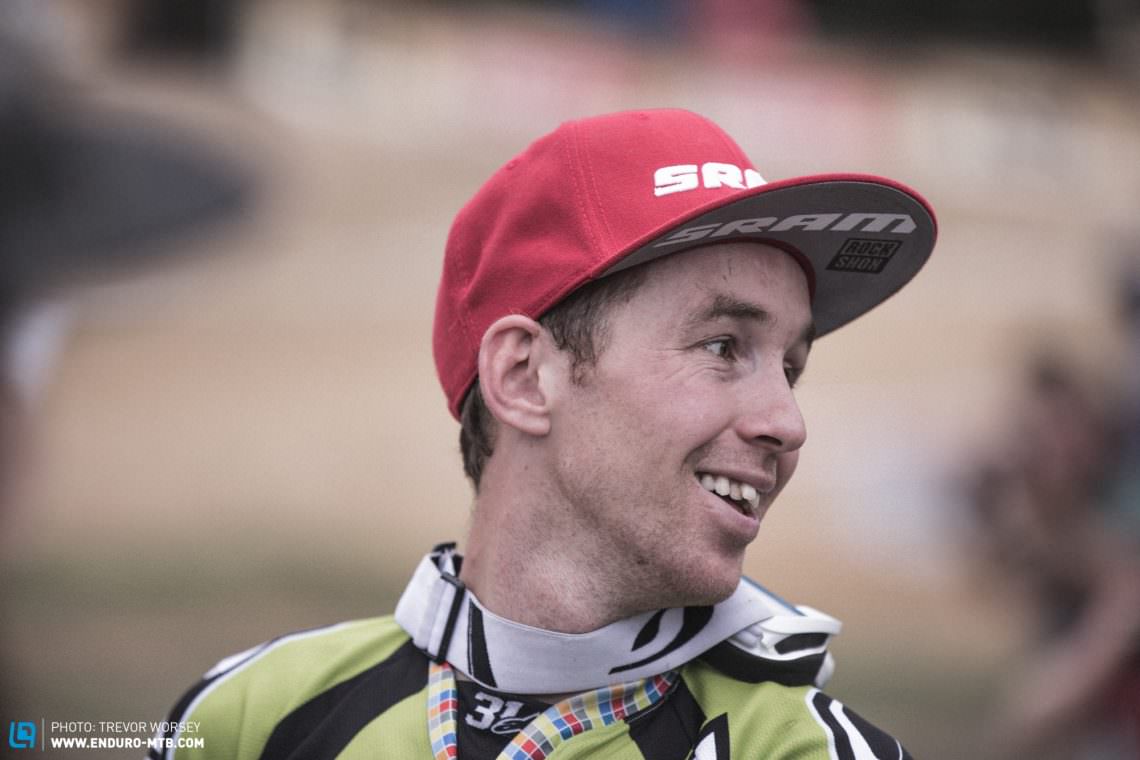
It’s easy to see the concerns of the organiser in this, but what about the racer? When we race we all want to do well, we have little time to practice, and our goal is getting down the course as fast as possible without breaking any rules. We checked in with arguably one of the sport’s most experienced racers, Jerome Clementz, for his thoughts.
“This topic has been a thread since the beginning of enduro. Culturally, there’s a different vision depending on how enduro was introduced in your country. Some started as “blind races” where it was considered a skill to be able to interpret the line as long as you were not cutting any tape, while other events, mostly with practice, expect you to stay on the trail even if there’s no tape. From here we’ve seen a lot of conflict, mainly regarding if it’s good or not for our sport. Is it cheating, or interpreting the taping?”
Jerome expands, “In my opinion the responsibility is on both the rider and organiser. The organiser should be careful while taping the course, marshalling, and being precise during the race briefing regarding what is allowed or not. If it’s clearly written in the rules and communicated at the race briefing, then going off the trail is cheating, and the organizer should have marshals to enforce the rule.” Jerome goes on to reflect Chris Ball’s comments concerning the bigger picture: “Riders should be aware that they’re only able to race because someone, for example the forestry commision, gave them permission, and cutting the course and damaging the trail could be disastrous for gaining permission to race again in the future.”

So what does Jerome think the solution should be? “We see less of a problem when the people who tape the course have a ‘racer’s eye,’ noticing lines when they tape. Alex Balaud (former racer) is a great example – he is in charge of the French enduro series, and spots any compromising lines while taping. On my side, if I notice a major issue with some line during practice, I stop, take a picture, and report to the organisation so they can fix this and make everybody ride the fair line. I’ll not do this for a one meter inside line, which I think is a part of the racing, but if it’s a major cut which makes the course unfair (like in the video) I’ll definitely report the problem.
From the example you have given me, I believe that racers are not cheaters: they simply take the rules and interpret the trail. However, the line in the video for me is cheating as there is too much difference between the line and the trail, but if there is no specific rule I would say the responsibility is equally split between the rider and the organiser.” Chris Ball’s take on the video is more direct and perhaps echos my own: “Looking at the video from the event, it’s clear those guys should not be doing that. They should all be agreeing that it needs taping off and agreeing not to do it. I find that really irresponsible.”
A common argument expressed by many racers is that all the responsibility falls on the shoulders of the organisers, a belief that I’ve heard expressed many times, and the racer’s role is to simply race the stages presented to them. But to put so much pressure on taping damages the growth of the sport. We don’t want to get to the stage where we are having to continuously tape every stage on both sides – possible on a small hill, but what about in the big mountains?
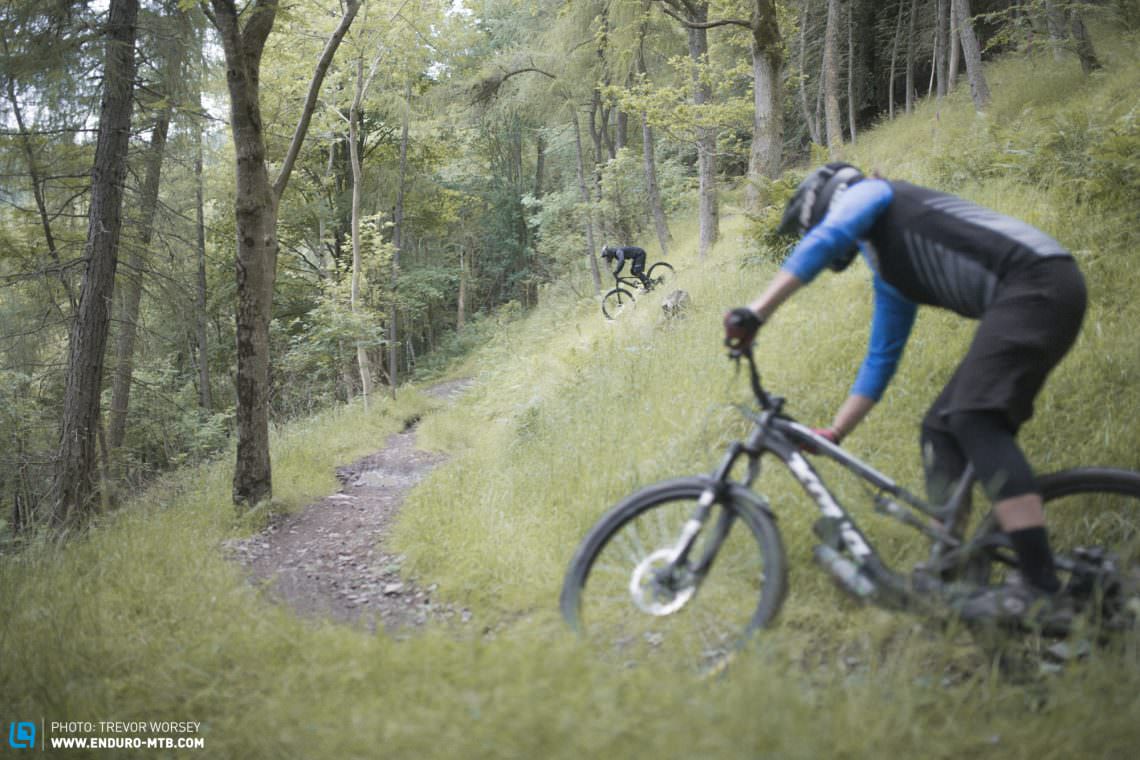 [/emaillocker]
[/emaillocker]
If we want to take enduro into the big mountains and into epic terrain, there needs to be some give and take. Often habitats are sensitive and trails have matured and been managed over hundreds of years. Chris Ball adds, “Crested Butte was a great example… beautiful ribbons of singletrack, originally created by motos, with flowing turns that go on for hundreds of meters and are beautiful to ride. It’s not really possible to tape them, and to some the temptation may be to think ‘I could go straight through the flowers.’ To stop that the organiser would have to heli in (at twelve thousand feet) hundreds of course poles. If that has to happen, then of course there would be no stage. They will be racing from half height in bike parks or trail centres, which nobody wants to do. There has to be an understanding and compromise, some give and take from both sides.”
Chris concludes, “Responsibility and common sense needs to be employed by both sides. Organisers need to upskill and try and see things from a rider’s perspective and riders need to understand that it’s wild racing and not everything can be taped off. We would hope that if riders find a problem they would come to us so we can work together to make it fair, encouraging the mentality of ‘We’re not going to do it, but you need to tape it off.’”
So where does that leave us? As a racer (albeit a mediocre one), I get annoyed when I walk a stage after a race and see endless straight lines and obvious cuts. This disregard and outright disrespect for the hard work that someone has put into a trail conflicts with my love for mountain biking. The “enduro line” is damaging the reputation of our sport, and if enduro racing should evolve into a locust-like carnival, moving from destination to destination pillaging the trails, then the sport has a short future. Before we consider that link line between two corners, we should think about how our actions look for younger guys and girls coming into the sport. Do you think that the “enduro line” should be culturally acceptable in our sport?
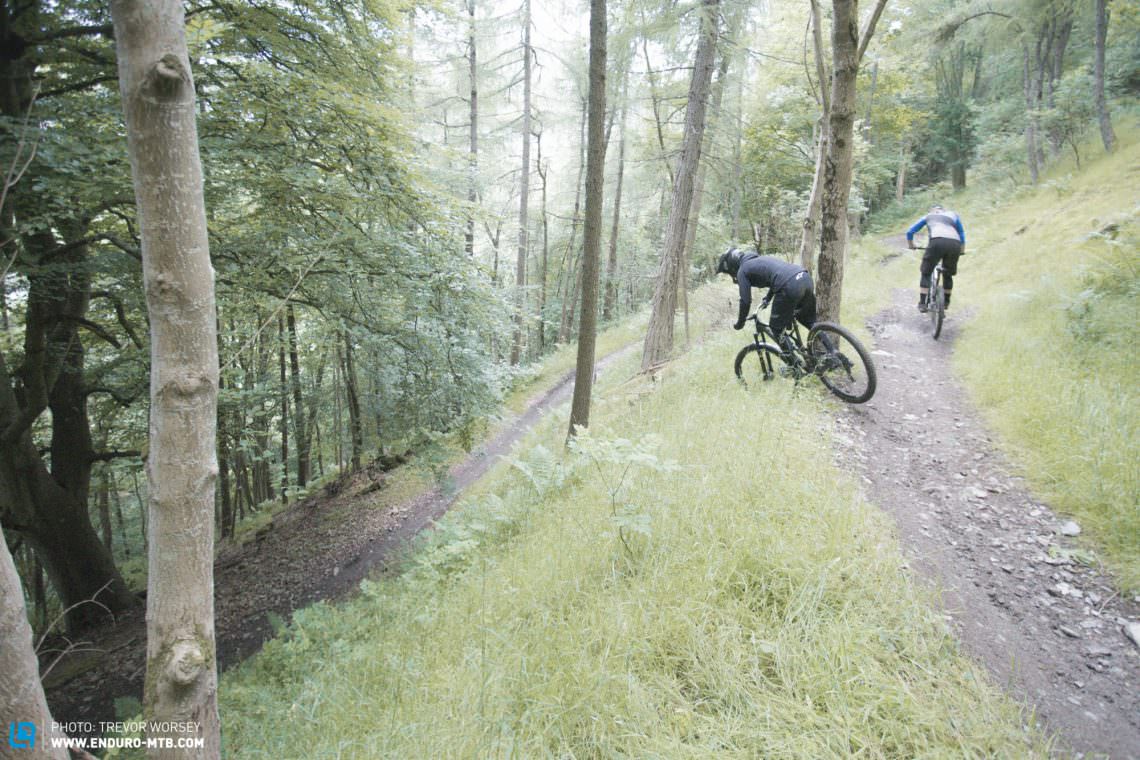
The “enduro line” is a topic that is sure to burn on and on. Yes, our role as a racer is to interpret the trail and find the fastest route down, but if we see something that doesn’t look right, or will damage the trail, then we should see it as our responsibility as ambassadors of our beautiful sport to inform the organisers so no harm is done. It’s time we start riding the moral high line, and let the “enduro line” go unridden.
Did you enjoy this article? If so, we would be stoked if you decide to support us with a monthly contribution. By becoming a supporter of ENDURO, you will help secure a sustainable future for high-quality mountain bike journalism. Click here to learn more.
Words & Photos:









